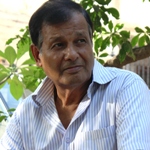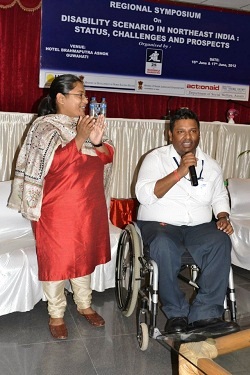In the early part of the 19th Century, when the tea industry had just taken off the ground in Assam, Research and Development (R&D) came almost hand in hand with it. At the very inception of the Industry, Lord William Bentinck, the then Governor General of British India, appointed a high powered Scientific Committee to study the possibility of growing tea in India. Ever since a lot of works have been done in the field of planting and manufacturing of tea although Tocklai Experimental Station, the biggest tea research Centre in the world, formally came into being only with the induction of Harold Mann as the head of the set up in the beginning of the 20th century. Over the years, a dedicated band of scientists did pioneering works to make Assam tea what it is today.
The demise of William Hadfield, one such dedicated scientist some years ago, had drawn the curtain on an important phase of tea research in Assam. As a tea scientist with the Tocklai Experimental Station at Jorhat, Hadfield had made significant contribution in his chosen field. Despite his formal retirement many years ago, he had refused to hang up his boots and died in harness while helping major tea groups in an advisory capacity.
Bill Hadfield, as he was commonly known, was a very friendly person. A keen sports person, he was an excellent rugby player with interest in tennis, football and also some interest in cricket. He and wife Maureen made an affectionate and hospitable couple.
“He also had an adventurous streak in him that once nearly cost him his life”, recalls his friend Wazir Khan, a former tea planter and a well-known Shikari-turned-conservationist.
In the early sixties of the last century, Khan was a young and energetic young assistant at Sangsua tea estate near Jorhat and one of the very few people holding an Elephant Control License. Whenever an elephant would turn rogue killing people and pulling down houses and properties, he used to be declared rogue by the authorities and Khan, being a holder of the Elephant Control License, would be notified to destroy the animal in the interest of public safety.
Once Khan received one such urgent communiqué issued by the district administration that a rogue elephant was wreaking havoc in a forest village along the National Highway 39 near Golaghat and it needed to be bumped off immediately. Khan, however, could not move immediately and had to wait till the next weekend for permission to leave the garden. On Saturday, as he had packed up and was ready to go, he suddenly remembered that he had promised to take Hadfield with him in his next hunting trip. Initially he was hesitant to take along an inexperienced person on such a dangerous mission as shooting a rogue. But later he decided that experience must start somewhere and some day, and he sent a note to Hadfield who grabbed it like a shot.
Khan gave Hadfield a 450/400 DB Westley Richards with two cartridges and he himself took a 452 Magnum, ideal for doing in a pachyderm. The villagers who had spent sleepless nights for days together, were happy to see these two gentlemen with their formidable looking weapons.
In such situations, Khan used to always remember George Orwell’s story of shooting an elephant in Burma(now Myanmar). Although Orwell had known that the elephant was not a rogue one, but was in mast and once the mast was over, the animal would be normal again, yet the crowd expected them to shoot it and in case he did not do so, they would be disappointed and would lose confidence in him. So he was forced to shoot the animal to maintain his credibility.
“We wear a mask”, he said, “and our face grows to fit it.”
However, in the present case, Wazir Khan at least knew for sure that the elephant had wreaked havoc for quite some time and had killed several people. It was a rogue and had to be killed. But none of the villagers could muster enough courage to accompany the shikaries and to show them the way. At last one braveheart called Baruah from amongst the villagers came forward and offered to help.
It was a moonlit night when the trio ventured out looking for the rogue elephant. It was an arduous task for them to traverse uneven grounds overgrown with brambly bushes where they frequently tripped. Baruah was given a five- cell flashlight with which he showed the way. Hadfield, not used to walking on such uneven grounds had fallen behind.
At last they came upon what they had been looking for – a huge tusker was standing blocking their way like a hillock. They stopped and with Baruah’s torch focused on the huge ears of the elephant, Khan stealthily walked forward. As soon as he came within the range of the elephant, Khan raised his Magnum, aimed and squeezed the trigger. Unfortunately the slug flew a little high and missed its target. The elephant seemed slightly confused. He turned and started walking away. They also started following it.
And then…suddenly it happened! The tusker turned around, trumpeted loudly and came menacingly charging at his stalkers. There was neither time nor opportunity to runaway. Khan had only one cartridge left in his 425 Magnum. Hadfield had fallen behind. Besides, he was not used to handling a 450/400 Double Barrel gun and had never shot a big game. It was a Catch-22 situation. Khan could not afford to miss his target again. He decided to wait for the animal to come sufficiently close.
Fortunately, the villager accompanying him turned out to be mettlesome. He kept the beam of the flashlight steady and when the tusker came dangerously close, Khan took aim and pulled the trigger .The bullet went right through the centre of his forehead. The animal stopped short, staggered backward and fell on his knees. Then with a loud trumpet, the jumbo collapsed.
Khan and his companions returned from the jaws of death. When the news reached the villagers, they were euphoric. There were night-long celebrations. He was delighted to see them relieved and was glad that nothing had happened to him and his companions. But the thought of the risk that they had taken that night, particularly with Hadfield, who was wet behind the ears, in such a dangerous mission, still gives Khan a quiver.
Find us on facebook: facebook.com/TheThumbPrintMag







































